I have a geodataframe with geometry and 7 attribute fields. I would like to create 7 maps in a table format each representing values of one column. I could do it for one map, but I do not know how to loop through all the columns.
|A| B| C| D| F| E| G| H| W| geom|
|0| 5350128.04| 0.494195| 0.411917| 0.265306| 0.124506| 0.263811| 0.400000| 0.166342| 0.103118| MULTIPOLYGON (((7223015.300 933307.794, 722283...
|1| 5350363.06| 0.182385| 0.233161| 0.102041| 0.158103| 0.162909| 0.404255| 0.388132| 0.393285| MULTIPOLYGON (((7232843.491 944100.077, 723282...
|2 5350363.07| 0.182385| 0.233161| 0.102041| 0.158103| 0.162909| 0.285106| 0.455253| 0.400480| MULTIPOLYGON (((7234559.454 946413.506, 723455...
|3| 5350378.23| 0.182614| 0.240933| 0.163265| 0.081028| 0.286922| 0.417021| 0.148833| 0.122302| MULTIPOLYGON (((7231013.429 945703.934, 723100...
|4| 5350378.24| 0.182614| 0.240933| 0.163265| 0.081028| 0.286922| 0.740426| 0.305447| 0.191847| MULTIPOLYGON (((7231620.303 946337.383, 723161...
Columns A and B are Ids. I used the following code to create a map based on "C" column. I would like to have 7 maps, 4 in first row and 3 in the second.
fig, ax = plt.subplots(figsize=(12, 12))
minMax_gdf.plot(column='C',
ax=ax,
legend=True,
legend_kwds={'label': "Total C",
'orientation': "vertical"})
